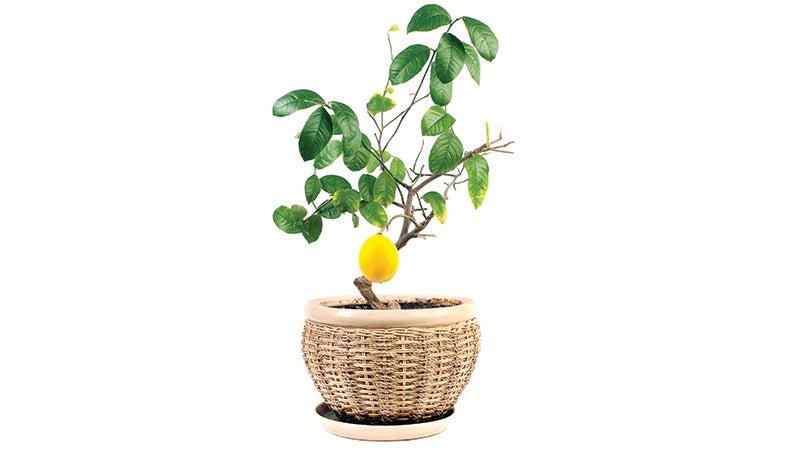You Can Grow a Fruit Tree In a Small Space

Dwarf trees fit into small spaces yet bear bushels of full-sized fruit. Many thrive in containers, so you don’t even need a yard for planting. That puts them in reach of just about anyone who loves fresh, healthy food.
Top Picks
Standard fruit trees top 30 feet tall, while those sold as “semi-dwarf” can be more than 15 feet. Dwarf and miniature types peak at 10 feet tall, with a similar-diameter canopy. Just about every kind of fruit tree now comes in the smaller sizes—these are the easiest to start with.
Apples
You can choose from many varieties, including favorites like Honey Crisp and Golden Delicious. In the tightest spaces, you can plant a “columnar” apple, which has stubby limbs that keep the fruit close to the trunk.
Cherries
Pie (aka tart) types tend to be more productive and less prone to problems than sweet cherries. Whichever you choose, cover the tree with netting to prevent birds from devouring your crop before harvest time.
Citrus
Lemons, limes, and mandarin oranges don’t tolerate freezing temperatures, but the dwarf trees grow well in pots that you can bring inside during the winter months. Meyer lemons and kaffir limes are especially well-adapted to containers.
Peaches
These summer favorites come in early season–, midseason-, and late season–ripening varieties—the latter are best where hard frosts continue well into spring, which can kill the blossoms of earlier types.
Plant For Success
Sunshine and fresh air
Your fruit tree will grow vigorously and avoid issues if you situate it in a spot with all-day sun and an unobstructed breeze.
Mind the graft
Dwarf fruit trees are made by grafting a branch from the desired fruit-tree type with a rootstock that stays short. The graft line is visible as a swelling near the base of the trunk. Dig a hole, loosen the soil inside it, then set your tree so that the graft line
is 2 inches above the soil.
At stake
A young tree’s shallow roots leave it vulnerable to damage in heavy winds, so you want to keep it securely staked for the first couple of years. After pushing two wooden stakes into the soil on opposite sides of the trunk, use tree ties or any broad, elastic material to wrap a figure-eight loop between the trunk and stakes. The ties should be taut but still allow the tree to bend a bit in the wind.
Fruit Tree Care Plan
Open the center
Air circulating through your young tree prevents diseases and fungi. As branches grow, some will lean out and others will lean in toward the main tree trunk. In late winter, prune off branches that cross in the center and block air flow.
Dare to thin
You’ll harvest the biggest and best fruit if you thin out the crop each year. When the fruit is quarter sized, choose one to keep every 3 inches or so on each branch, and then remove the rest. Painful, yes, but you’ll be glad you did it.
Go organic
Pests and diseases can sometimes infest backyard fruit trees, but you can keep your harvest pure by treating problems with safe, natural controls, such as horticultural oil and mineral sprays.
How To Care For a Potted Fruit Tree
Light container
A 15-gallon container is big enough to grow a dwarf fruit tree, but still manageable to move. Ceramic pots look nice, but plastic is not as heavy. Fiber pots are the best option: They’re lightweight, don’t overheat in the sun (unlike plastic), and “air-prune” the tree’s roots so they don’t encircle the pot and choke the tree.
Super soil
Never use soil you’ve dug up outside—it holds too much water. You can use bagged potting soil, but the ideal mix for a fruit tree is equal parts peat or coir (coconut husk fiber), mature compost, and vermiculite.
Food and drink
Give your tree a gallon of water every 7 to 10 days when it hasn’t rained. Each spring and fall, scratch a couple of inches of mature compost into the top layer of soil mixture to nourish the tree and keep it bearing fruit season after season.